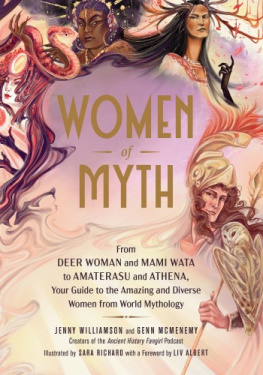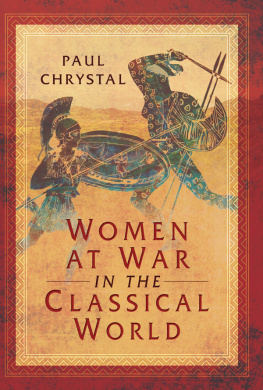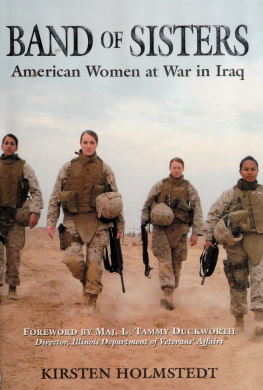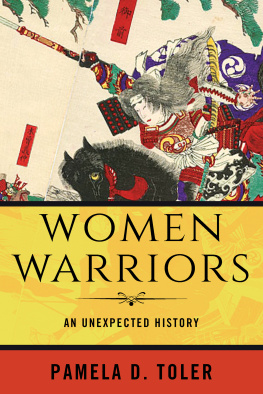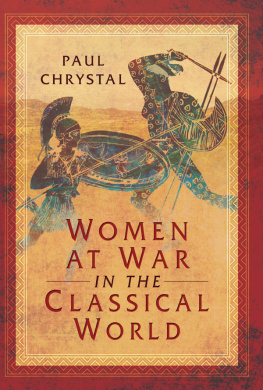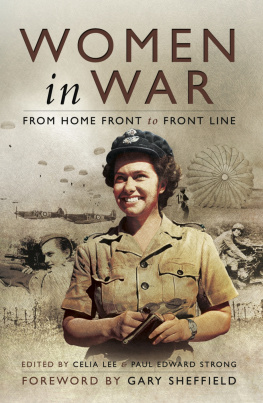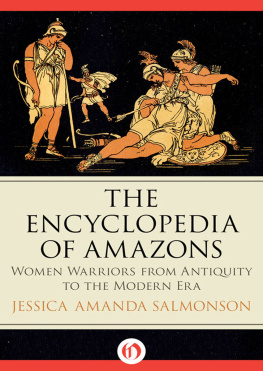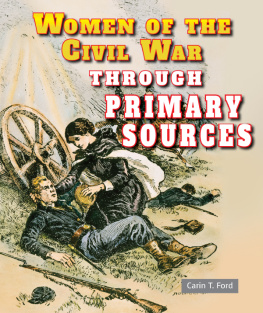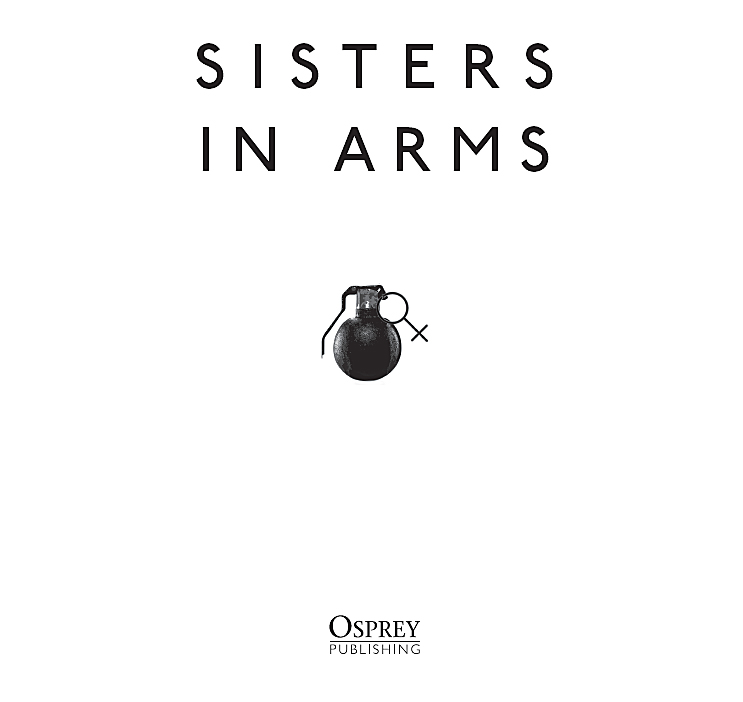
Dedication
To Andy and my daughters of the river,
Thames and Isis

Contents
Behind every book is a team of people who have enabled its production. The idea to revisit my first book, Amazons and Military Maids: Women Who Dressed As Men in Pursuit of Life, Liberty and Happiness , published in 1989, came from Lisa Thomas, my editor at Osprey. So I owe a debt of gratitude to Lisa, who suggested there might be not only more to say on the subject of women in the military, and those who passed as men to enter its ranks, but that thirty years from the original, it might need a fresh approach. Although I have been writing on various aspects of women at war for the past decades, this book provided me with an opportunity to rethink my original ideas, to update and expand upon my research, and to ask new questions.
Id also like to thank Marcus Cowper and Gemma Gardner at Osprey for their support, patience and professionalism. Jamilah Ahmed and Barbara Levy at the Barbara Levy Literary Agency were instrumental in launching this project. Im also grateful to my colleagues in the English department at City, University of London, Patricia Moran, Lisa ODonnell, Karen Seago, Minna Vuohelainen, and Caroline Sipos. Thanks to Liz Robertson at The Imperial War Museum London and Katy Jackson at the National Army Museum for providing opportunities to discuss my work in progress.
A number of archivists and historians generously shared their expertise. Dorothy Sheridan pointed me in the direction of the Colonel Barker material at Mass Observation. Warren Sinclair provided archival material on Isabel Gunn; Julian Putkowski and Julian Walker shared references on the First World War; and Dianne Dugaw was generous in providing references to eighteenth-century warrior heroines. Id also like to thank Cynthia Enloe for her early inspiration and gendered analysis of the military, and historians Rudolf Dekker, Fraser Easton, Rene Gremaux, Louise Miller, Peter Moore, George Robb and Jane Schultz for sharing references and comments. Hannah Peake, Catherine Mayer, Sarah Waters and Kate Worsley generously provided their thoughts on contemporary and historical debates about sex and gender. I am grateful to several translators who were able to provide English texts from primary sources: Eva Antonijevic, Louise Askew, Henk van Kerkewijk, and Mira Harding. Arthur and Nan Baker welcomed me into their home to delve into the archives of their relative Flora Sandes, and provided me with lasting memories of her.
Maria Scherbov was a delight to work with, providing case studies of contemporary Russian servicewomen, translations of interviews and her cogent analysis. I am also grateful to Sarah Melcher, who gave me her thoughts on women playing male roles in historical re-enactment societies; and to documentary film maker Pepita Ferrari, who sadly passed away last year, for her generosity in sharing information about Sarah Emma Edmonds.
As ever, I am indebted to my family for their enormous support. My sister, Penny Wheelwright, the Canadian film director and producer, enabled us to revisit Isabel Gunns story as a docu-drama, The Orkney Lad: The Story of Isabel Gunn in 2003. My daughters, Thames and Isis, remain my inspiration for speaking to future generations of powerful women. And my husband, Andy, makes everything possible.
Julie Wheelwright
London, 2019
Under a cobalt summer sky, I arrived at the Plains of Abraham in Quebec City, the grassy expanse where British troops conquered the city in a pivotal battle of the Seven Years War that would lead to the collapse of New France. It was 2004 and I was researching a biography about my eighteenth-century ancestor Esther Wheelwright, so was curious to witness a re-enactment of how they might have fought British and French colonial troops and militias on 13 September 1759. Above the fray I found the camp followers mainly women, who, in early modern armies, provided the militarys essential auxiliary services. Among tents, tipis, wooden stools and open fires, bonneted women drifted in petticoats and skirts, minding children, stirring iron pots or chatting as they sewed. While the menfolk cleaned muskets and adjusted uniforms, the women prepared real lunches for real children, much in the way that the historic military wives had. Or so I thought.
Amid the re-enactors preparing for battle, I discovered women in military uniform as soldiers, officers, drummers and fife players. I approached a figure dressed in the white breeches, green jacket and broad felt hat of the Kings Rangers, a New England militia. Sarah Melcher, an American IT consultant, spoke eloquently about her adopted historic character. Chauncey Goodrich was a farm boy, born in 1740, who enlisted with the Kings Rangers and fought in the Revolutionary War, and Sarah made clear that she was portraying a boy in the army. I was intrigued.
As Sarah talked about her life as Chauncey, I realized how strikingly her experiences reflected the historic cases of passing female combatants who were the subject of my 1989 book, Amazons and Military Maids: Women who Dressed as Men in Pursuit of Life, Liberty and Happiness. Listening, I recalled the early modern soldier Christian Davies, the British marine Hannah Snell, the French Girondist soldiers, sisters Flicit and Thophile de Fernig, the Russian cavalry officer Nadezhda Durova who fought against Napoleon, the American Civil War soldiers Sarah Emma Edmonds, Sarah Rosetta Wakeman and Loreta Velazquez, the Russian soldier of the Tsars army Maria Bochkareva, and many more. Sarah herself was inspired to join the Kings Rangers as Chauncey after reading about Deborah Sampson who fought as Robert Shurtliff during the American Revolutionary War. Whether one applauds or deplores their presence or their actions, they prove that women have always participated in wars, often volunteering for the same reason men do: to protect their country and their comrades.
Sarah shared with Sampson her motives for enlisting. While most female members of the Kings Rangers re-enactment society stayed in camp, Sarah was drawn to the more active, running around kind of life so became Chauncey. Her need to prove herself doubly to the men, to win their respect echoed the precious few reflections that historys female warriors left behind. When were out there in camp or on the battlefield, the men know they can trust me. They know that Ill do the right thing and that Ill go the distance, she says. The historic record offers scanty but illuminating details on attitudes towards the work itself which, for Sarah, was hard, involving maintenance of musket and kit, and long marches in a heavy wool uniform, all without the luxury of bathing. Youve got to be able to get dirty, grubby and sweaty and not worry about it, she says, recounting the awkwardness of keeping up her physical disguise, especially during her menstrual cycle. To support her male identity, among other things, she always carries a shaving kit. It still gets ugly. Many of the re-enacting men tend to be very conservative and that includes their perspective on how women should behave. Strong women doing what I was doing are often frowned upon. The women sewing and cooking are a lot less threatening.
While historic female warriors rarely explain how, living amidst men, they would cope with such bodily functions as menstruation, they seem possessed of an intense pragmatism. More frequently, these women comment on their relationships with their comrades who, as Sarah found, might treat them like a little brother, and with whom a romance in her male persona was unthinkable. In more contemporary scenarios, where female combatants operated openly and even commanded mixed-gender units, their authority might be challenged. Although Sarah has won her fellow Rangers acceptance, she says they still dont want to take orders from a female voice no they dont some of them dont mind but my major doesnt want the men taking orders from a woman. Such resistance, Sarah thought, back in 2004, might prevent her from becoming an officer even though I might be one of the most competent soldiers there. I knew the drill and we were sharp and we were good. When we spoke again in 2019, she had become a sergeant in her French and Indian unit, but said the men still didnt like strong women and I ended up getting complaints about what a bitch I was. Her constant presence at events like the 1759 re-enactment, however, has inspired other women to take up their muskets, join cannon crews and adopt male roles. Even the past, it seems, cannot remain static.


